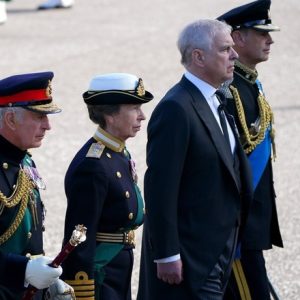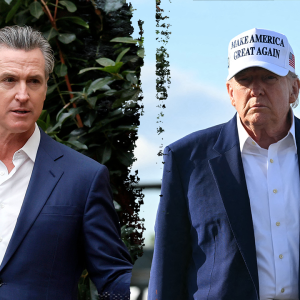
In the law profession, we lean heavily on rational argument and analytical proof. Design can sometimes appear peripheral—a cosmetic afterthought rather than a critical factor in shaping perceptions. Yet when you walk into a law firm’s offices, land on its website, or flip through its marketing materials, the fundamental impression you form often starts with design. How the content is laid out, how colors, typography, and images interact, and even how well the user interface anticipates your needs can profoundly influence whether someone sees your firm as buttoned-up and distant or modern and empathetic.
Short-term marketing metrics often sideline the role of design, relegating it to mere window dressing. That mindset results in homogenized visuals: safe color palettes, generic stock photos, and predictable layouts that tick necessary boxes but fail to stand out. From a measurement perspective, design might seem successful if a layout boosts click-through rates or a downloadable PDF meets accessibility benchmarks. These are meaningful achievements, but they don’t fully express design’s deeper potential. For a firm aiming to cultivate genuine leadership status, design moves beyond functional utility to create an immersive experience that conveys purpose.
Just as a strong brand narrative demands empathy and a long-term perspective, design relies on understanding how people visually process information and form emotional bonds. If your client alerts are visually cluttered, clients may subconsciously see you as overwhelmed or unorganized—even if the legal advice itself is sound. If your logo is small and overshadowed by large blocks of text, you give the impression that your firm is hiding behind legal jargon instead of engaging an audience. Conversely, crisp, elegant layouts that privilege white space and highlight brand elements suggest clarity of thought and commitment to the reader’s needs. Over time, a consistent, well-executed design language serves as “visual shorthand” that communicates your firm’s ethos.
Design shapes the intangible sense of trust that is critical in professional services. Potential clients need an immediate signal that your firm invests in quality, pays attention to detail, and stands firmly behind the identity it projects. Effective design, implemented across all touchpoints—website, social media channels, digital presentations, pitch decks, and office environment—assures them that you respect their time and aesthetic sensibilities. When competitors churn out templated visuals or recycle outdated brand motifs, the law firm that stands apart through design becomes more memorable, gaining a subtle advantage in establishing credibility before a prospect has even read a single line of legal commentary.
Far from an “add-on,” design emerges as a strategic complement to the brand story. It clarifies what the firm stands for and allows subtle cues—color choice, typography, graphics—to reinforce the idea that your attorneys and staff operate with precision and forethought. This is especially critical when merging your design sensibility with client-centric outreach. Consider how publications, webinars, or microsites appear to clients. Are the visuals intuitive enough for a harried general counsel to skim a key insight in seconds, or do they create friction that discourages deeper engagement? On the business development side, design can unify proposals, case studies, and attorney headshots to project a cohesive identity that says, “We are a team, and we know exactly how to position ourselves in your world.”
In a measures-driven setting, it’s tempting to consider design modifications only if they promise immediate boosts in engagement metrics. But short-term data rarely captures whether a refined design has helped seed a prospect’s long-term trust or left a lasting positive impression—factors crucial in an industry where major engagements might take months or years to develop. A single visual upgrade might not drastically shift quarterly objectives, yet over time, these subtle design enhancements can shape how your firm’s brand is referenced in high-stakes circles. Clients may be unable to pinpoint exactly why they found your pitch deck more compelling or your website more inviting, but the cumulative effect of thoughtful design can make all the difference.
Integrating design as an intrinsic part of brand strategy means embedding it in the feedback loop that keeps your marketing aligned with leadership goals. You can still measure aspects of design’s impact—user satisfaction scores, brand recall surveys, or structured interviews with key clients about your firm’s “look and feel.” But the goal is to use these measures to illuminate new ways design can amplify your broader mission, not to crush creativity beneath rigid metrics. By respecting design’s contribution to emotional resonance, you create a feedback loop that values both data and aesthetic insight, avoiding the trap of equating “on-brand” with “plain vanilla.”
Brand leadership in the legal sector involves weaving together multiple strands—storytelling, subject-matter expertise, personal relationships, and operational efficiency—into a seamless whole. Design binds these strands visually, giving them a coherent shape that clients can instantly recognize and appreciate. In an age where prospective clients first encounter law firms in digital channels, your visual identity becomes the first handshake, the first impression that either invites deeper engagement or prompts them to move on.
By recognizing design as a core dimension of leadership rather than an afterthought, law firms can move from reactive measures to a holistic vision for how they appear, communicate, and connect. It is at this intersection—where thoughtful aesthetics meet purposeful storytelling—that true brand leadership takes hold, ensuring that metrics, however useful, remain just one instrument in a far more resonant symphony.
This post was originally published on Lynda’s LinkedIn newsletter, Marketing without Jargon. Lynda leads a team at Decker Design that focuses on helping law firms build differentiated brands.
Header image: created in Midjourney, courtesy of the author.



